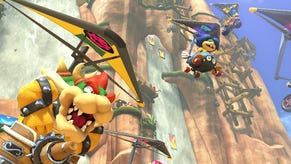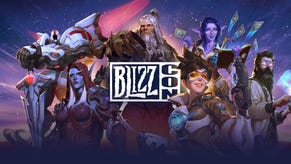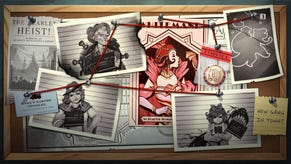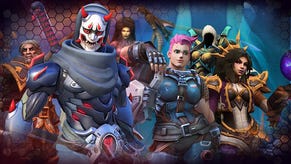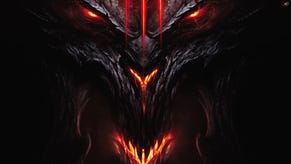On its Second Anniversary, Heroes of the Storm Has Finally Turned a Corner
We talk to Heroes of the Storm's lead designer about the challenges faced to this point, and why it deserves to be appreciated in its own right.
This article first appeared on USgamer, a partner publication of VG247. Some content, such as this article, has been migrated to VG247 for posterity after USgamer's closure - but it has not been edited or further vetted by the VG247 team.
You could hear the Overwatch fans moaning as they were dragged kicking and screaming into Heroes of the Storm a couple weeks ago: "Oh, I have to play this lousy game just to get a D.Va skin?"
The irritation shown by a broad swath of Overwatch fans is symptomatic of the general attitude toward Heroes of the Storm. On one side, you have DotA 2 and League of Legends fans insisting that Heroes of the Storm is too basic and too casual. On the other, you have people who seem to consider the entire genre to be poison.
Such attitudes have resulted in Heroes of the Storm being seen as something of a red-headed stepchild in the Blizzard family. While Overwatch has received all the criticial acclaim and success over the past year, Heroes of the Storm has been quietly motoring along in the background, building up bit by bit. Now that hard work is starting to pay off. With today being its second anniversary, you get the feeling that it's turned a little bit of a corner.
Many of the early hiccups are behind Heroes of the Storm now. Last month's Heroes of the Storm 2.0 rollout was its coming out party—a chance for both new and lapsed players to come by and see what's changed over the past two years. A healthy metagame has formed around its unique maps, with the majority of characters getting at least some play. The community is active and passionate, and importantly, not nearly as negative as the increasingly angry Hearthstone fandom. They still complain, of course, but when someone badmouths their favorite game, they are quick to jump to its defense.
When the Penny Arcade shown below appeared in the wake of the release of Heroes of the Storm 2.0, fans jumped all over it.

"[Heroes of the Storm] matches taking too long is not true... in fact it's one of the main design choices that a game should take around 20 minutes, which is 10-20 minutes less than other MOBA matches take. Ignorance is not a good fuel for humor," one commenter sniffed.
Heroes of the Storm lead designer Travis McGeathy is a relative newcomer to the team, but he agrees that it's come a long way in just a couple years. "You can see it everywhere from the map design to the hero design, all the way through the major update we just made to the progression system itself. That was one of the things we really got from early experience."
When the Heroes of the Storm first came out, accounts were capped at Level 40 and heroes capped at Level 20. Each hero had a "Master Skin" that could be earned at Level 10, but most of the best skins had to be purchased directly from the store. Lots of players capped out their accounts and grew tired of the grinding XP curve for heroes. "It was just one of those things where we went back to the drawing board and looked at ways to allow for good progression that happened relatively frequently and was rewarding," McGeathy says. "[It] kind of cascaded out into all you see with 2.0—the loot chests, the progression system, the profile system, and all that fun stuff."
Nowadays Heroes of the Storm's progression moves at a satisfying clip, with a loot box being unlocked every time you level up a character or your account. Even better, if you get a package that you don't like, you can spend a bit of in-game currency to reroll and get something better. You can get a skin (or even a hero) from pretty much every loot box you open—a far cry from the frustration and disappointment of opening a loot box in Overwatch.
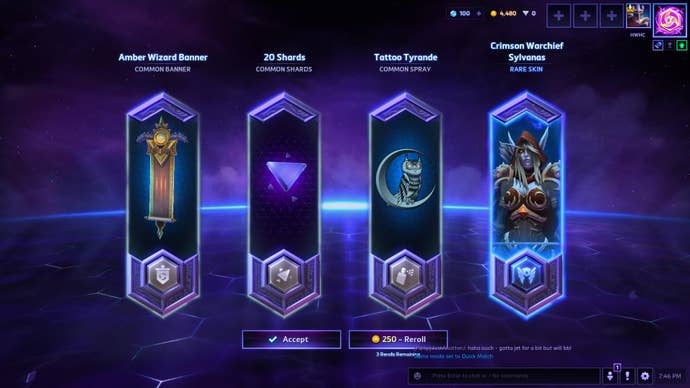
Heroes of the Storm's Depth Issue
Of course, loot boxes hardly matter if the core game isn't that much fun. The main charge against Heroes of the Storm has long been that it's so streamlined that it omits all of the high-level strategy that makes MOBAs so much fun. There are no items to buy; last hitting is non-existent, and XP from minions is spread evenly across the entire team.
McGeathy calls it a perception issue. "On the surface, yeah, we don't have last hitting, but we have a lot of depth in a lot of other areas," he said. "Managing your experience gain, soaking, that kind of thing, is a crucial aspect for being better at the game itself. Just because you don't have one little tiny piece doesn't mean you're losing a lot of depth we've added in a lot of other areas too."
He dismisses complaints about the lack of last hitting. "People don't really like things like last hitting, which really leads to a toxic environment. We decided really early on to cut it for a friendlier game, but that brings its own level of challenge and skill. Now you have to be better at coordinating as a team than in other games."
Hardcore fans will point to the high-level strategy afforded by drafting once you're in ranked play. When considering bans and team picks, you have to consider not just team composition but the map that you're playing. A character like Falstad is an absolute force on a map like Warhead Junction, where his free map movement allows him to quickly gather nukes as they spawn, but is less useful elsewhere.
A more recent addition is Quest Talents—abilities that become more powerful as you complete certain objectives. McGeathy is particularly proud of these. "Heroes is a very team-based game, and we're always looking for ways to let players stand out a little bit while still embracing that team-based nature. We don't want to have individual leveling, for example, that's something that sets heroes apart, but we're looking for ways to let players show off and excel. So the quests kind of do that. If you play in such a way that completes the quests, you'll be able to complete them quickly, gain a power spike, and do well in the match."
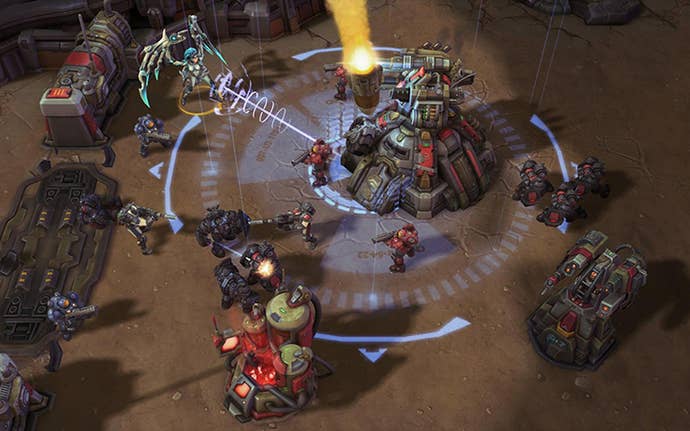
Most important is the balance. Heroes of the Storm is in a pretty good place right now, with no hero being too weak or too dominant. It's not perfect, of course. There's always more work to be done, but the variety is solid at all levels of play.
It's a marked improvement from where Heroes of the Storm has been in the past. There was a point where Haunted Mines—a level in which you collect skulls to power-up a golem that attacks enemy towers—was so broken that it was actually pulled from the rotation and completely retooled. Characters like Sylvanas, Tracer, and Varian have all been the subjects of heated controversies.
Blizzard has quite a few tools at their disposal to monitor balance issues. The team monitors everything from winrate to talent selection across different skill levels. They also have a crack team of hardcore players who play the game non-stop and offer a constant stream of feedback.
When Heroes of the Storm's characters have felt unbalanced, it's often been because the community had a hard time adjusting to a new playstyle. Take Tracer: the speedy Overwatch mascot who is an effective but fragile assassin in Heroes of the Storm. "The thing with Tracer wasn't so much that her winrate was really high, but just that she was really mobile and a little frustrating to play against," McGeathy says. "So again it was just about people figuring out how to play against her. Genji has a little bit of that as well: he's super mobile, but he's also super fragile.
On the opposite end of the spectrum is Zarya, a character who many felt was far too weak at the outset. "It's funny, Zarya came out low enough that people were complaining, so we buffed her over time until the point where winrate did well. Then people started learning how to play her."
One of McGeathy's favorite moments was when a high-level player told him about their experience with Zarya. "They said, 'I never really enjoyed Zarya in Overwatch until I played her in Heroes of the Storm and I figured her out.' So that's a special case. Just in general we're always looking for new and unique ways for heroes to work."
Like every competitive game, Heroes of the Storm has a balance queue a mile long that still needs to be addressed. McGeathy calls out Uther as one example of a character who may be seeing a bit more play at the top end than they like. They'd also like to take another look at Thrall. Characters constantly need to have their talents refreshed to avoid becoming stale. Meanwhile, new roster additions are coming out all the time.
At the moment, McGeathy is monitoring the progress of D.Va, the most recent character to be added to Heroes of the Storm. "This is always the fun moment. We play things internally forever, then it gets in the hands of many more people than who are on the team, and you find all sorts of problems. So hopefully we won't run into too many of them."
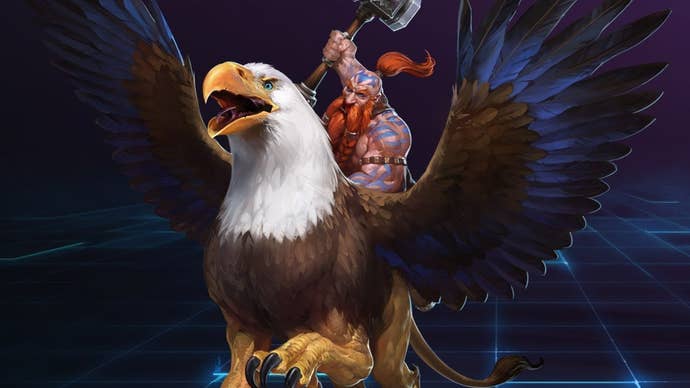
What the Future Holds
Looking at Blizzard's stable of competitive games, it's easy to feel like Heroes of the Storm is being overshadowed by its siblings. Indeed, the Heroes of the Storm 2.0 rollout was in some ways more about Overwatch than it was about Heroes.
But for Blizzard it's a win either way. They've created an interconnected ecosystem with their games, and Heroes of the Storm sits at the heart of it at all. With Heroes of the Storm being Blizzard's mascot game, it's the perfect vehicle for all sorts of promotions while being a strong game with a passionate fanbase in its own right.
And the various teams are always learning from one another. McGeathy says the Heroes of the Storm team has been taking a look at some of Overwatch's social features, "We're chatting with them to see how that's working. From the progression system we just added, for example, some of that came from talking to the Hearthstone team, some of that came from talking to the Overwatch team and adding our own special sauce to it. And it goes both ways. When Overwatch updated their ranking system, they came to us."
Heroes of the Storm still has some ways to go in the esports space, but it's making strides there as well. Blizzard's formerly scattered approach has coalesced into the Heroes of the Storm Global Championship, which McGeathy says has helped establish some structure while boosting the overall skill level of the competing teams.
Going forward, McGeathy and company plan to take a look at a lot of features under the hood. They will be looking to add more social features, a clan system, an updated party finder, and in-game voice chat. They're also looking to add stats that will help players to understand how well they're playing. And, of course, there will be more heroes, more brawls, and more maps.
But will there be a Play of the Game feature? "It's not a technical problem. It's just an issue of figuring out programmatically what the most interesting play of the game is," he says. "We could probably tackle it, but it's a great undertaking to do so, and there's a lot for us to tackle in the meantime."
Oh well.
Heroes of the Storm may not have Play of the Game anytime soon, but it's still made plenty of strides in other places. And its momentum only figures to grow as it continues into its third year of full release.


